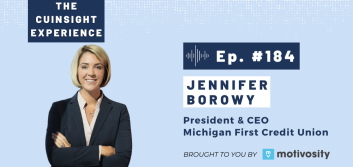Make it plain!

What is interchange? By definition, it is two or more people exchanging views or ideas. However, it could also be defined as a transportation junction that connects various roads or highways. Although both definitions are correct, to the average person there is likely little to no connection to the meaning that interchange is related to transactions conducted between merchants, processors, credit unions and other financial institutions. For many consumers, interchange is the silent, elusive partner that facilitates every credit and debit card transaction when a purchase is made at the grocery store, movie theater, or online. And yet, being among the hot topics of credit union advocacy and legislative matters, interchange is not clearly understood. But in order for this term and other financial concepts to resonate in the psyche of everyday credit union members and board volunteers who hike the hill, we must make it plain.
Growing up in church with a Baptist dad and a Pentecostal mom, I often heard a deacon or minister shout in response to the pastor to “make it plain.” This phrase typically signaled to the congregation to listen intently to what was being said by the preacher because of its spiritual importance and relevance. It was also a telegraph to the preacher to take his time and simplify the text so the average lay person on the pew could understand it. This was necessary especially when the sermon was utilizing the King James Version containing words like “thee” and “thou” or “thence” and hence”. Without making it plain, much of the message could get lost in the translation.
Pastors are not just teaching and preaching to clergy or deacons trained in homiletics and/or exegesis, but they are speaking to every person who enters the four walls of the local assembly. Likewise, when it pertains to credit union regulatory or legislative matters the message should be understood by not only C-suite professionals and middle managers, but by all, including volunteers and entry level employees. Board members, tellers, and loan officers alike should be able to discuss and share these pertinent issues around the kitchen table and make them plain to their family members who are likely their fellow cooperative owners. In doing so, when it comes to hiking the hill or writing a letter to their state or federal representative, the issues can flow clearly, passionately, and not be voiced or penned like a rehearsed script.
That said, our two largest national credit union trade organizations are embarking on a historic merger and should make it plain for all to understand. According to research quoted by the National Institutes of Health, 65% of the population are visual learners. This means more than the majority of people are better served by a visual representation of information rather than words that are just read or heard. Pictorials are a fantastic way of explaining complex issues. To explain interchange, pictures may be a more effective method in depicting the flow of debit and credit card transactions. Members can then understand why interchange is needed to make purchases happen when they can visually see what occurs as a credit or debit card is presented at the point of sale, flowing to a processor, to the network servicer, and then to the merchant’s and card issuer’s financial institution. Similarly, it may be helpful to explain the ramifications and impact of the merger via a visual cost/benefit analysis.
As a former chairman of CUNA’s Volunteer Leadership Committee, I often boasted of the credit union movement’s “army of board volunteers” who stood ready to be mobilized with one mind and the common message of furthering the legislative and regulatory goals of credit unions. However, just having boots on the ground at state legislatures and on Capitol Hill is only part of executing the mission. Yes, presence in large numbers is very important. But understanding the mission and message makes a substantive difference when we make it plain. According to the U.S. Army, “the principles of mission command demand that understanding comes from the bottom up and not just from the top down in order to ensure success.” In other words, effective “mission command” is not just following orders, but also understanding them in executing the mission.
To that end, our credit union advocates should make it plain regarding the issues that have a profound impact on the movement. Credit unions should make it plain when telling their stories that promote financial wellness and financial literacy. If we do, our communities will come to know and realize what distinguishes credit unions from other financial institutions. We must make it plain about our philosophy of people helping people. Just preaching to the choir is not good enough, we must also make it plain to those outside of the four walls of our credit unions evangelizing the underserved, unbanked, millennials, Gen X, and Gen Z alike. Our motto “Not for Profit, Not for Charity, But for Service” is the good news of financial services. Let’s make it plain!





